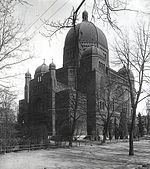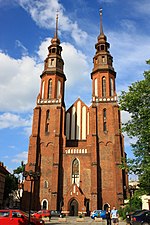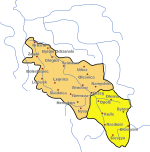University of Opole

The University of Opole (Polish: Uniwersytet Opolski) is a public university in the city of Opole. It was founded in 1994 from a merger of two parallel educational institutions. The university has 17,500 students completing 32 academic majors and 53 specializations. The staff numbers 1,380 - among them are 203 professors and habilitated doctors and 327 doctors. The university confers Licentiate, Master's, doctoral, and post-doctoral degrees. It educates students in forty-seven primary fields of study, both in full-time and part-time programs. For several years, the University of Opole has been an interdisciplinary institution with a predominance of humanities courses. It consists of twelve faculties, twenty institutes, and twelve intercollegiate units, including the Main Library, the Foreign Language Centre, and the Physical Education and Sports Centre.
Excerpt from the Wikipedia article University of Opole (License: CC BY-SA 3.0, Authors, Images).University of Opole
Plac Mikołaja Kopernika, Opole Stare Miasto
Geographical coordinates (GPS) Address Nearby Places Show on map
Geographical coordinates (GPS)
| Latitude | Longitude |
|---|---|
| N 50.668888888889 ° | E 17.925833333333 ° |
Address
Studnia Świętego Wojciecha
Plac Mikołaja Kopernika
45-040 Opole, Stare Miasto
Opole Voivodeship, Poland
Open on Google Maps











